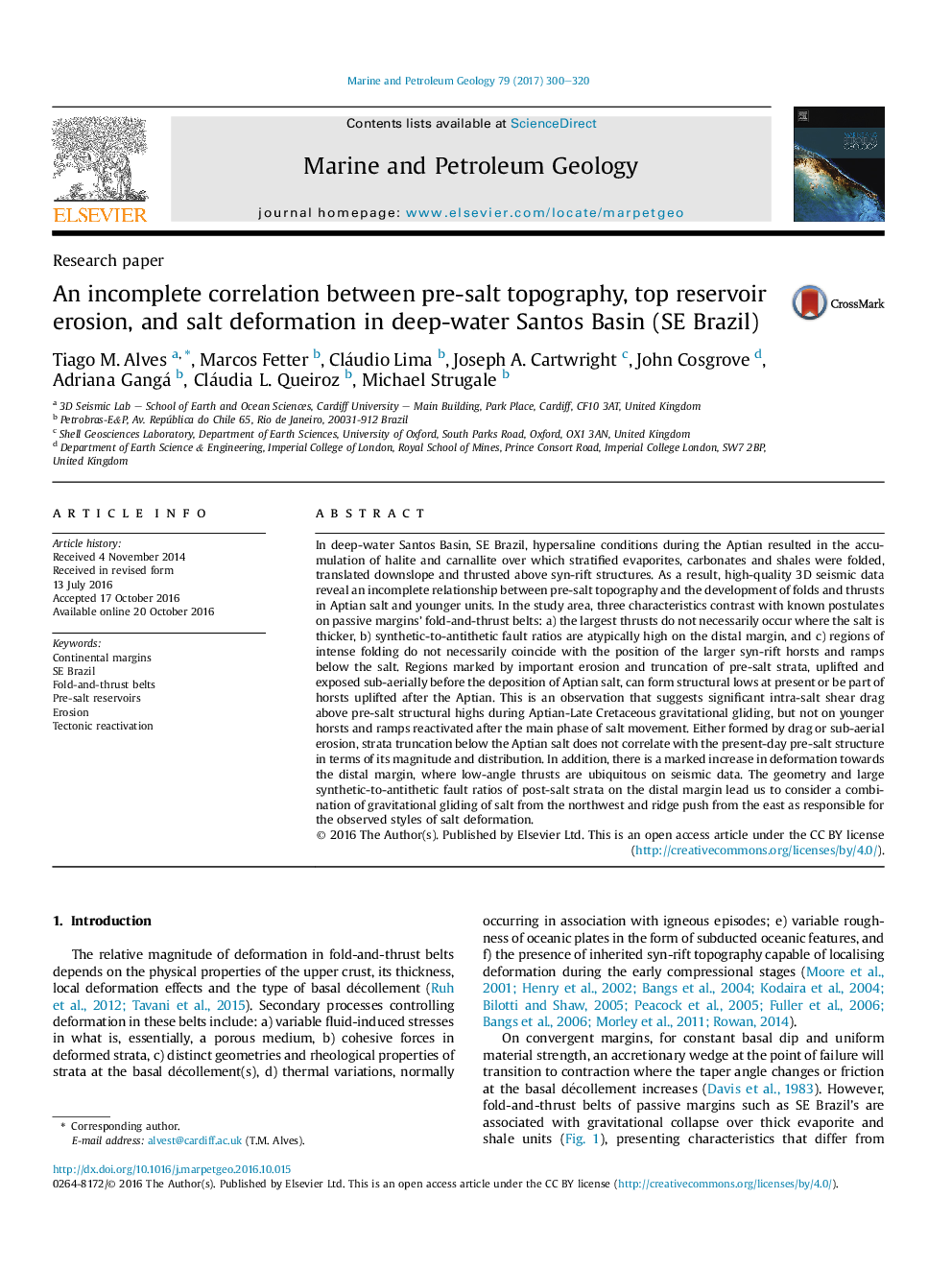| Article ID | Journal | Published Year | Pages | File Type |
|---|---|---|---|---|
| 6434323 | Marine and Petroleum Geology | 2017 | 21 Pages |
â¢Salt deformation in deep-water SE Brazil was long lived.â¢Folds and thrusts do not necessarily occur above pre-salt structures.â¢Increased deformation in distal areas is associated with ridge-push phenomena.â¢Top reservoir erosion is prominent and reveals important intra- and base-salt drag.
In deep-water Santos Basin, SE Brazil, hypersaline conditions during the Aptian resulted in the accumulation of halite and carnallite over which stratified evaporites, carbonates and shales were folded, translated downslope and thrusted above syn-rift structures. As a result, high-quality 3D seismic data reveal an incomplete relationship between pre-salt topography and the development of folds and thrusts in Aptian salt and younger units. In the study area, three characteristics contrast with known postulates on passive margins' fold-and-thrust belts: a) the largest thrusts do not necessarily occur where the salt is thicker, b) synthetic-to-antithetic fault ratios are atypically high on the distal margin, and c) regions of intense folding do not necessarily coincide with the position of the larger syn-rift horsts and ramps below the salt. Regions marked by important erosion and truncation of pre-salt strata, uplifted and exposed sub-aerially before the deposition of Aptian salt, can form structural lows at present or be part of horsts uplifted after the Aptian. This is an observation that suggests significant intra-salt shear drag above pre-salt structural highs during Aptian-Late Cretaceous gravitational gliding, but not on younger horsts and ramps reactivated after the main phase of salt movement. Either formed by drag or sub-aerial erosion, strata truncation below the Aptian salt does not correlate with the present-day pre-salt structure in terms of its magnitude and distribution. In addition, there is a marked increase in deformation towards the distal margin, where low-angle thrusts are ubiquitous on seismic data. The geometry and large synthetic-to-antithetic fault ratios of post-salt strata on the distal margin lead us to consider a combination of gravitational gliding of salt from the northwest and ridge push from the east as responsible for the observed styles of salt deformation.
